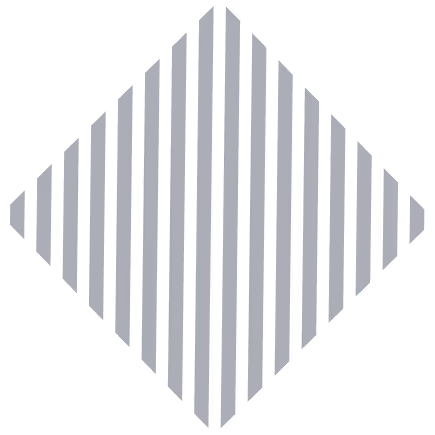How to Use AI in Recruiting to Streamline Hiring and Improve Candidate Matching?

Have you ever felt overwhelmed by the endless hours of sorting resumes and coordinating interviews?
That’s where AI in recruiting steps in. It takes over the repetitive tasks, like resume screening, interview scheduling, and candidate engagement, so you can focus on what truly matters: finding the right talent.
Instead of delays and guesswork, AI filters applicants quickly and reduces bias, giving you a clear shortlist of candidates who fit your roles. With AI-powered interviews, candidates can respond anytime, making the process more flexible and respectful of their schedule.
Platforms like HRMLESS add another layer of support. Automated scoring and reminders keep candidates engaged, reducing ghosting and no-shows. That means your team spends less time chasing and more time making confident hiring decisions.
And the best part?
AI integrates smoothly with your current systems, offering real-time insights highlighting bottlenecks and speeding up hiring cycles. As your business grows, these tools scale effortlessly, without adding extra stress.
In this blog, we will talk about:
- What AI in recruiting actually means and how it works in practice
- The key benefits and applications that improve efficiency and fairness
- How to adopt AI tools like HRMLESS without losing the human touch
Let’s explore how AI can transform your recruitment into a faster, more innovative, and more candidate-friendly process.
Understanding AI in Recruiting
AI has changed how hiring works by handling many tasks automatically. You can use AI to quickly find qualified candidates and keep the process moving without delays or bias. It improves how your team manages job ads, screening, and interviews.
What Is AI-Based Recruitment?
AI-based recruitment uses software to automate parts of hiring.
It can scan resumes, rank candidates, and even schedule interviews with little human help. This speeds up the process and reduces errors. The AI looks for patterns in resumes and matches them to job descriptions.
It also helps remove bias by focusing on skills, not personal details. Tools like conversational AI let candidates complete interviews whenever they want, making scheduling easier.
Using AI lets you focus on the best candidates faster. It frees your team from repetitive work like sorting resumes or sending follow-ups.
History of AI in Talent Acquisition
AI first appeared in recruiting as simple resume scanners in the early 2000s. These tools used keywords to filter candidates, but often missed good applicants if they didn’t match exact phrases. Over time, AI grew smarter through machine learning. Now, it understands the full context of resumes and can better predict candidate success.
Recent advances include automated interviews and chatbots to engage candidates 24/7. AI today integrates fully with systems you already use, like ATS (Applicant Tracking Systems). This evolution means tools like HRMLESS automate screening, scoring, scheduling, and communication.
Benefits of AI for Recruiting Teams
AI saves you time by automating routine tasks.
You can cut hours spent sorting resumes or chasing candidates through SMS and email nudges. It also improves candidate quality. AI surfaces the best matches so you don’t waste time on unqualified applications.
With less human bias, hiring is fairer and diverse. Recruiting teams can scale easily using AI. Whether you have two or twenty openings, automation keeps the process smooth without extra stress.
Here’s what you gain with AI:
- Faster hiring: 60% reduction in time to hire
- Less ghosting: More candidates stay engaged until the interview
- Better matches: Only qualified candidates move forward
Using tools like ours, you automate the complex parts and hire more confidently.
Key Applications of AI in Recruitment
AI tools help you save time, reach better candidates, and reduce mistakes. These tools can quickly sort resumes, find the best talent, and manage interview schedules without delays or confusion.
Resume Screening Automation
Screening resumes is one of the most time-consuming parts of hiring.
AI scans large volumes of resumes fast. It looks for keywords, skills, and experience that match your job description. This reduces human error and bias by focusing only on qualifications.
You get a shorter, more accurate list of candidates ready for the next step. AI also scores resumes based on fit. This means you quickly see who matches your needs best. With platforms like HRMLESS, automated screening frees up your time to focus on interviews and candidate engagement.
AI-Powered Candidate Sourcing
Finding the right candidates is tricky, especially passive job seekers who are not actively applying.
AI can analyze data from online profiles and past hiring trends to target talent more precisely. It places job ads where your ideal candidates spend time online. AI narrows down sourcing by matching job criteria with real candidate behavior patterns.
This targeted approach increases the chances of attracting high-quality applicants without wasting effort on poor fits. You can fill roles faster and reach diverse talent pools without bias using AI sourcing tools.
Interview Scheduling Tools
Coordinating interviews wastes hours with back-and-forth emails and missed calls.
AI-powered scheduling tools automate this process by syncing calendars and instantly offering candidates available time slots. This reduces no-shows and last-minute cancellations because candidates pick times that work for them. AI tools can even send reminders via SMS or email to keep candidates engaged.
Working with scheduling automation from our tool, you cut scheduling time by over half. Your team wastes less time chasing availability and more time on evaluating candidates and closing hires.
Enhancing Candidate Experience With AI
Improving how candidates interact with your hiring process helps keep them engaged and interested. Using AI tools speeds up and personalizes communication while offering job matches that better fit candidates’ skills and goals.
AI Chatbots for Communication
AI chatbots can answer candidates’ questions instantly, at any time of day. They keep candidates informed about their application status and next steps without waiting for a recruiter’s reply.
This reduces frustration and keeps candidates engaged. Chatbots can also send reminders for interviews or needed documents, lowering no-show rates and speeding up scheduling. By handling routine communication, chatbots free you to focus on high-value tasks.
Our tool works with AI chatbots across SMS and email, offering a smooth experience on channels candidates prefer. This real-time engagement means candidates stay connected, which improves their view of your hiring process.
Personalized Job Recommendations
AI can analyze candidate data to suggest roles that match their skills and experience.
Personalized recommendations help candidates find relevant jobs faster, making the process feel more tailored to them. These AI-driven suggestions reduce time spent sorting through poor fits. Candidates receive targeted listings instead of generic job posts.
This increases their chances of applying for positions where they can succeed. When you use a platform like ours, these recommendations are based on up-to-date job openings and candidate profiles. This keeps suggestions relevant, helping you attract quality candidates quickly.
Improving Diversity and Reducing Bias
Using AI in recruiting can help make your hiring process fairer. It can analyze many candidates quickly and flag hidden biases in job descriptions and candidate screening. These tools help ensure you focus on skills and fit, not on unconscious biases or irrelevant details.
AI-Driven Unbiased Screening
AI can scan resumes and applications without focusing on factors like race, gender, or age.
Instead, it looks at relevant skills, experience, and qualifications. This way, no one is unfairly filtered out early in the process. For example, our tool uses AI pre-screening to score and rank candidates based on objective criteria.
This removes human assumptions during the first review, keeping your shortlist more balanced. Automated screening also works 24/7, so you won’t miss out on diverse talent because of timing.
By detecting patterns in job ads, AI helps rewrite them to attract more diverse applicants. It finds words that might discourage certain groups and suggests alternatives that promote inclusivity. This leads to broader candidate pools and better chances to hire diverse, qualified people.
Reducing Human Bias in Shortlisting
Even after AI filters candidates, humans make final decisions.
Bias can slip in here, but AI can limit this risk. Tools like HRMLESS automatically score candidates and highlight why they qualify based on measurable data. You keep control but get clear, unbiased insights.
This helps prevent favorites or assumptions from shaping who moves forward. It also reduces time spent on low-fit applicants, improving efficiency. Smart AI can also remind you to review diversity goals regularly. It prompts fair comparisons and flags if your shortlist lacks balance.
Keeping human oversight paired with AI recommendations creates a teamwork approach that supports fairness at every step.
Implementing AI Recruitment Tools
To get the most from AI in recruiting, focus on picking the right platforms and ensuring they work smoothly with your existing hiring systems. The tools you choose should fit your needs and work well with systems like applicant tracking software to keep everything running without extra effort.
Choosing the Right AI Platforms
When selecting AI tools, look for features that save time and improve candidate quality. Prioritize platforms that automatically handle tasks like pre-screening, scoring, and scheduling.
Key features to consider:
- Automated screening: Filters out unqualified candidates early.
- Candidate engagement: Uses SMS or email to keep candidates interested.
- Real-time insights: Tracks hiring progress and detects bottlenecks.
- Bias reduction: Ensures fair evaluation to improve diversity.
Choose tools that are easy to use and adapt to your hiring volume. For example, our tool offers automation for scheduling and interviews, which cuts ghosting and speeds up hiring by 62%. Select platforms with flexible plans so you can scale without hassle.
Integration With Applicant Tracking Systems
AI recruitment tools are most effective when they connect seamlessly with your applicant tracking system (ATS). Integration smooths data flow and prevents manual work, such as duplicate entry.
Look for these integration benefits:
- Automatic candidate updates: Moves candidates through stages without you lifting a finger.
- Centralized data: Keeps all hiring information in one place for more transparent reporting.
- Real-time syncing: Updates candidate scores and interview results instantly.
- Simplified workflows: Reduce errors and speed up decision-making.
Make sure your chosen AI tools support common ATS platforms. Our tool, for example, fits easily into your ATS, automating pre-screening and scheduling to save 2.7 hours per hire.
This integration keeps your process fast and organized without disruption.
Challenges and Limitations of AI in Recruiting
Using AI in recruiting can save time and improve candidate quality. Still, essential concerns must be addressed, especially around handling data safely and helping your team accept new tools. These factors affect how well AI fits your hiring process.
Data Privacy Concerns
When you use AI in recruiting, you collect sensitive information from candidates. This includes resumes, interview responses, and sometimes personal details. Protecting this data is critical. You must follow rules like GDPR or CCPA to keep candidate data safe.
Failure to do so can bring legal trouble and hurt your company’s reputation. Limiting access to candidate data within your hiring team is also essential. Use secure systems that encrypt data and track who views it.
For example, our tool manages data under strict guidelines to prevent leaks. This gives you peace of mind while you speed up hiring.
Overcoming Resistance to Change
Introducing AI in recruiting can meet pushback from your hiring team.
People may worry AI will replace them or add complexity to their work. To ease these fears, focus on how AI tools reduce stress by automating routine tasks. Show how platforms like HRMLESS handle pre-screening, scoring, and scheduling so that recruiters can focus on decisions.
Training is key. Provide precise steps and support to help your team get comfortable with AI software. Finally, involve your team early. Let them test the tools and give feedback. This builds trust and makes adoption smoother.
Measuring Success and ROI of AI Recruitment
To understand how well AI helps your recruiting, you must track specific data and keep improving your process. This means looking at numbers that show cost savings, candidate quality, and time saved, then using that feedback to make your hiring smarter and faster.
Key Performance Indicators
Start by measuring cost per hire and time to hire. These numbers tell you how much money and time you save using AI tools like ours, which can reduce manual work and speed up screening.
Track candidate quality by examining new hires' performance and the number of candidates who pass AI screening stages. Measure offer acceptance rate and employee turnover to see if AI helps you find candidates who stick around.
Other useful metrics include:
- Screening accuracy: How well AI filters out unqualified candidates.
- Candidate engagement: Response rates to automated SMS or email nudges.
- No-show rates: Reduction in missed interviews due to automated scheduling.
Continuous Improvement Strategies
Use real-time data from your AI hiring platform to spot where your process slows or loses candidates.
For example, if many candidates drop out after AI screening, review your questions or scoring criteria. Update your AI model regularly with new hiring data. This helps the system learn what top candidates look like and improve over time.
Test small changes, like different interview times or messaging, and measure their effect. Automation frees up your time, so focus on these refinements to boost results. Our tool’s analytics dashboard helps you see these patterns clearly, making it easier to adjust quickly and keep your hiring efficient and fair.
Future Trends in AI Recruiting
AI recruiting keeps evolving to make your hiring faster and smarter.
- One key trend is hyper-personalization. AI will tailor candidate interactions and assessments to fit each role and individual, improving fit and engagement.
- Another growing trend is immersive assessments. These use simulations and real-world tasks to evaluate skills better. They give you deeper insights beyond resumes, allowing you to spot the best candidates quickly.
- Automation will expand beyond screening and scheduling. Tools like those in HRMLESS will handle candidate engagement through SMS and email. This will reduce ghosting and speed up hiring. By letting AI do repetitive tasks, you can expect to save hours per hire.
- You’ll also see more voice-enabled AI interviews soon. These let candidates speak naturally, adding a human element while keeping the process efficient. This helps you evaluate communication skills without extra effort.
- Finally, real-time analytics dashboards will become standard. They give precise data on bottlenecks, candidate flow, and hiring speed. These insights help you continuously improve your recruitment process.
With AI tools like ours integrating into your ATS, your hiring workflow will be smoother. You will spend less time on manual tasks and more on making the right hires.
Wrapping It Up
AI is no longer a future concept; it’s a practical solution reshaping how recruiting gets done.
By automating tasks like screening, scheduling, and candidate engagement, AI reduces stress and speeds up hiring while improving accuracy and fairness. The result?
Faster matches, fewer drop-offs, and better candidate experiences. Platforms like HRMLESS bring these benefits together, helping you cut time-to-hire by over 60% while keeping candidates engaged through real-time nudges and reminders.
Recruiting isn’t about replacing you; it’s about empowering you.
Start your free trial or book a demo with HRMLESS today, and see how AI can transform your hiring into a smarter, more straightforward, and more scalable process.
Frequently Asked Questions
Curious about how AI actually fits into your recruitment workflow?
Here are some common questions recruiters often ask when exploring AI-powered hiring. These quick answers give you practical insights beyond the basics already covered in this blog.
Can AI improve candidate engagement during long hiring cycles?
Yes. AI tools send timely nudges via SMS and email, keeping candidates updated and reducing drop-offs. This consistent communication builds trust, ensures transparency, and keeps top talent interested even when the process takes weeks.
How do small businesses benefit from AI recruiting tools?
AI levels the playing field by automating tasks usually requiring large HR teams. Small businesses save time, cut costs, and access quality candidates without heavy resources, making hiring faster and more competitive against bigger firms.
Does AI help with internal mobility and promotions?
Absolutely. AI can analyze current employee data to recommend internal candidates for open roles. This reduces hiring costs, boosts retention, and ensures growth opportunities for otherwise overlooked employees.
What role does AI play in improving employer branding?
AI supports branding by ensuring fast responses, transparent updates, and personalized candidate interactions. A smooth, engaging hiring process enhances your reputation, making applicants more likely to recommend your company, even if they don’t land the role.
Can AI adapt to niche or highly specialized roles?
Yes. Advanced AI systems learn from past hires and job-specific data. By analyzing unique skill sets and industry patterns, AI helps identify niche candidates who may not appear in traditional sourcing methods or keyword searches.
Featured
Subscribe to ournewsletter
Related posts
Explore the world of photography with our curated selection of
portfolio websites that showcase creativity and innovation.





